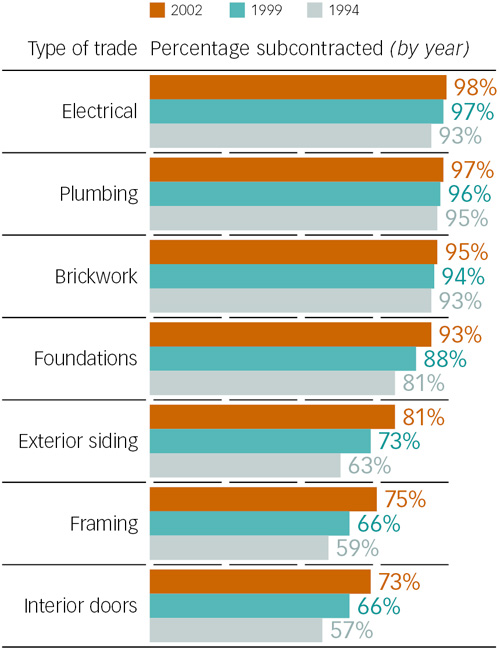Shigley is somewhere in the middle. As the remodeling contractor gains confidence in his trade partners and their ability to meet his (and his clients’) expectations, he enables them to estimate materials and make purchases, albeit through his accounts at various material dealers. “It just simplifies the purchasing process,” he says about allowing subs to takeoff, order, and pick up materials for their particular phase of the job. “They know how much they need better than we do.”
The value of that approach became clear recently when one of Shigley’s superintendents called in a materials order on behalf of a trade partner, only to short the amount needed. Though well-intended, the mistake caused some slippage in the remodeler’s profit margin. “Trades have different ways of estimating materials, but as long as they’re on budget, I don’t argue the method,” Shigley says. “How they get there doesn’t matter, but it took me a long time to realize that [reality] and get over it.”
Shigley’s role, he says, is now more management than minutiae, leaving his leads to liaison between trade partners, customers, and material dealers. For dealers, then, having a voice in that discussion means marketing their products and services to superintendents, subs, and perhaps even consumers.
Finding Worthy Partners Despite growth in the number of specialty contractors during the last decade, skill and reliability among subcontractors are in dwindling supply. In a survey of its readers, REMODELING magazine (a sister publication of PROSALES) found that being late to the jobsite was the No. 1 complaint about trade partners; issues including a lack of jobsite cleanliness, respect for the homeowner’s property, and shoddy workmanship also were in the mix.
And though leading builders and remodelers often maintain a loyal base of subcontractors, there’s always room for improvement and a change in the ranks. “Because of our reputation in the market, subs and suppliers are constantly knocking on our door,” says Jones. “It gives us an opportunity to look at options.” Dealers, especially those with installed sales, contractor referral programs, and ties to desirable or popular product inventory, can offer builders a viable alternative to the status quo.
To help weed out potentially weak subs, Jones relies on a list of local trade contractors that have been certified under the NAHB-RC program run by Alexander. To date, more than 1,400 specialty contractors nationwide, including Old Country Roofing, have passed the stringent program; the local home builders association in Las Vegas posts a roster of certified companies on its Web site for builders like Jones to use.
But he also considers dealer recommendations. “We’ll solicit three bids, but also ask our suppliers and distributors about their relationships with certain subs,” he says. In addition, many of the certified trade contractors in his market have developed better connections with suppliers after going through the NAHB-RC program. “They’ve gotten buy-in from their suppliers to help them achieve a higher level of quality and service.”
Hannigan, meanwhile, tests a new sub’s resolve by requiring the trade to maintain the same bid price (or per-foot calculation) for at least four houses. “That eliminates a guy who is low-balling his first bid to ‘buy’ your business,” he says.
Despite the attraction of installed sales programs to eliminate the need to shop for both labor and materials, hedge against low bids, or hand the job entirely to a sub, Shigley would rather see dealers serve as links between general and specialty contractors. “There’s some animosity [among contractors] toward installed sales programs, anyway,” he says, citing perceived conflicts of interest and a dealer’s overriding desire to sell more products instead of service the sale. “I prefer a contractor referral program so the dealer can focus on understanding our business better [instead of competing for it].”
However dealers attack the question of serving and selling to subcontractors, the bottom line appears to remain with builders and general contractors. “We expect a cooperative effort from the entire supply chain,” says Jones. “Our goal is to make sure however we handle [labor and materials], it’s a good working relationship for everyone at the table.” —Rich Binsacca is a contributing editor for PROSALES.

